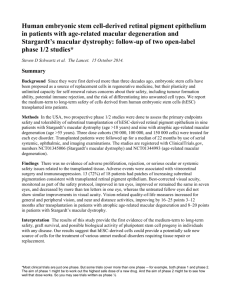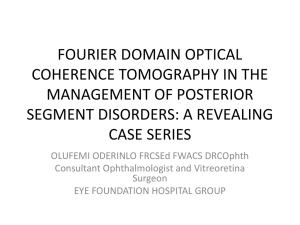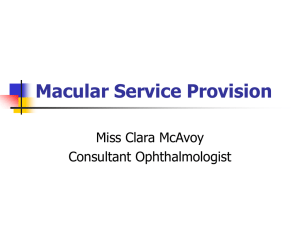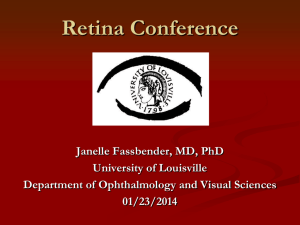A DAY IN THE LIFE OF A “3
advertisement
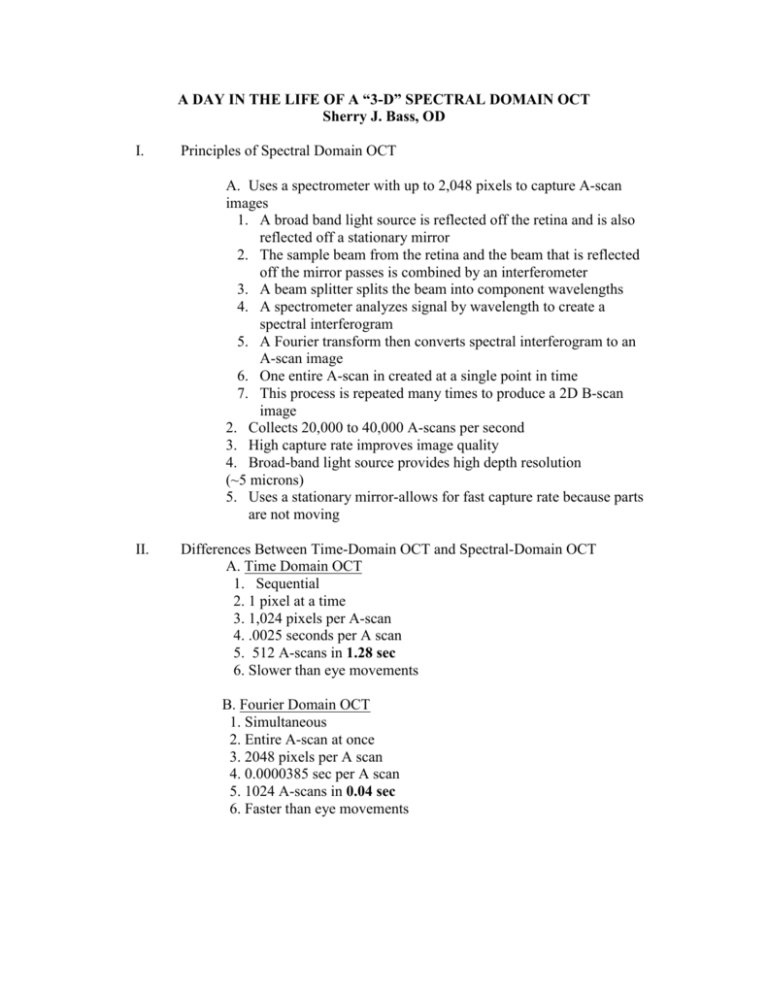
A DAY IN THE LIFE OF A “3-D” SPECTRAL DOMAIN OCT Sherry J. Bass, OD I. Principles of Spectral Domain OCT A. Uses a spectrometer with up to 2,048 pixels to capture A-scan images 1. A broad band light source is reflected off the retina and is also reflected off a stationary mirror 2. The sample beam from the retina and the beam that is reflected off the mirror passes is combined by an interferometer 3. A beam splitter splits the beam into component wavelengths 4. A spectrometer analyzes signal by wavelength to create a spectral interferogram 5. A Fourier transform then converts spectral interferogram to an A-scan image 6. One entire A-scan in created at a single point in time 7. This process is repeated many times to produce a 2D B-scan image 2. Collects 20,000 to 40,000 A-scans per second 3. High capture rate improves image quality 4. Broad-band light source provides high depth resolution (~5 microns) 5. Uses a stationary mirror-allows for fast capture rate because parts are not moving II. Differences Between Time-Domain OCT and Spectral-Domain OCT A. Time Domain OCT 1. Sequential 2. 1 pixel at a time 3. 1,024 pixels per A-scan 4. .0025 seconds per A scan 5. 512 A-scans in 1.28 sec 6. Slower than eye movements B. Fourier Domain OCT 1. Simultaneous 2. Entire A-scan at once 3. 2048 pixels per A scan 4. 0.0000385 sec per A scan 5. 1024 A-scans in 0.04 sec 6. Faster than eye movements III. Additional Advantages of Fourier-Domain OCT A. High speed reduces eye motion artifacts present in time domain OCT B. High resolution provides precise detail, allows more structures to be seen C. Larger scanning areas allow data rich maps and accurate registration of the images for change analysis D. 3-D scanning improves clinical utility E. Some models have dynamic 2D capability-“movie” presentation IV. Clinical Applications of 3D and Dynamic 2D OCT in Retinal Disease A. Macular Edema 1. Cystoid Macular Edema 2. Clinically significant macular edema 3. Macular edema secondary to venous occlusive disease B. Macular Holes 1. Macular cysts and “pseudoholes” 2. Lamellar holes 3. Full-thickness holes C. Epiretinal Membranes 1. Membranes with macular holes and without macular holes D. Vitreo-Macular Traction Syndrome E. Serous Detachment 1. Central Serous Choroidopathy F. Age-Related Macular Degeneration 1. Choroidal neovascularization 2. Disciform scar F. Hereditary Retinal Disease 1. Assessment of the photoreceptor integrity line in hereditary etinal and macular disease

